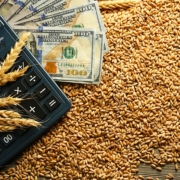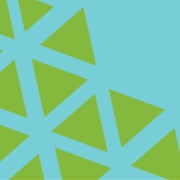Grocers Stand Up to COVID-19 — Bending but Not Breaking
 By Brandon Scholz, WGA President & CEO
By Brandon Scholz, WGA President & CEO
More than 22 months ago, the grocery industry was thrown right into the middle of the COVID-19 crisis before we knew it was a crisis and eventually a pandemic. Immediately, grocers were essential businesses and workers, and their job was to make sure people had access to food.
And they did their job despite mandates, masks, COVID-19 restrictions on employees and customers, a struggling economy, product shortages, workforce challenges, and more.
There was never a time to slow down and catch up, only opportunities to fine tune what was already a well-oiled grocery store machine.
But no matter what efforts grocers, convenience stores, and other retail food operations did during multiple transitional periods, there was always another obstacle when one problem was resolved!
The industry started to experience even greater challenges with shortage of products on the shelves, low inventory and incoming short orders — even worse than what was experienced during the pandemic.
Contributing to the growing angst of inventory shortages and not-quite-fully-stocked-shelves was the hyperactivity surrounding various CPI and rising inflation reports. And no tale of woe was complete without a dissertation on the patchy workforce in almost every business up and down Main Street, but especially in grocery stores across the state.
To top it all off, consumers started to hear about the problems with the supply chain whether it was getting products to the grocery store, making cars and trucks, or containers stacked to the sky’s in ports across the world.
Seriously, I have never heard so many people talking about the “supply chain” in the grocery industry as I have in the last four months.
For many, it’s an eye-opening moment coming to understand how food and products actually get on grocery store shelves. For others it’s the boogeyman that’s keeping the grocery biz from returning back to normal. As one WGA member said, we always took the supply chain for granted: it was efficient and effective.
Whatever that level of understanding is, it actually is a helpful teaching moment when we’re talking with the media, legislators, regulators, and others explaining what the grocery industry was going through in 2021 as we moved from the 2020 COVID-19 outbreak to the pandemic and now to an endemic with possible surges, mutant variants, and other unforeseen challenges.
As the pandemic, and now the endemic continue to be a daily part of our society, most experts say the industry is a ways away from store shelves returning back to “normal” and stocked to shopper’s pre-COVID expectations. To correct the imbalance, labor and workforce challenges, transportation/manufacturing/production constraints all have to be resolved.
As we forge ahead into 2022, there are a couple of things to keep in mind. First, we do not have a food shortage in this country. We have a challenge producing food and getting these products onto store shelves. Every component of the supply chain is involved in working to bring the system back to pre-COVID levels.
Second, yes, inflation is higher than it has been. But reports of grocery price increases across the board are not true. Yes, there are price increases. Yes, there are price increases greater than what we have seen in the past. But no, these price increases are not “across the board” that capture every product in the store. Pricing strategies are strategic; they are not haphazard.
Grocers work exceptionally hard to control price increases that are forced upon them as they receive products for their stores. Raising prices is one of the last steps a grocer takes. Shoppers are savvy and shop on price, quality, and service. Raise prices and customers know it.
As some point out though, grocers can’t fully absorb the price increases from the supply chain. Those price increases get passed on to consumers, but not until the grocer has run out of room to absorb those costs.
Looking back as we pulled out of 2020 and into 2021, we saw changing and evolving issues and challenges resulting from the initial COVID outbreak and how it ultimately affected the supply chain.
No doubt, that means we will continue to educate shoppers, the media, and others as to why grocery store shelves don’t look like they did before March 2020.
Moving forward into 2022, grocers will continue to manage the pandemic and deal with these challenges ahead. We need the government to stop issuing mandates and let grocers run their businesses. We need people to come back to work, not just for a job, but for a career.
—
The Wisconsin Grocers Association represents nearly 1,000 independent grocers, retail grocery chain stores, warehouses and distributors, convenience stores, food brokers and suppliers. Wisconsin grocers employ over 50,000 people with more than $1 billion in payroll and generates more than $12 billion in annual sales in Wisconsin resulting in approximately more than $800 million in state sales tax revenue. wisconsingrocers.com.








